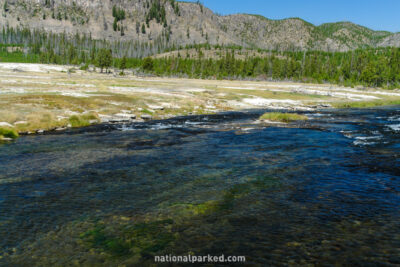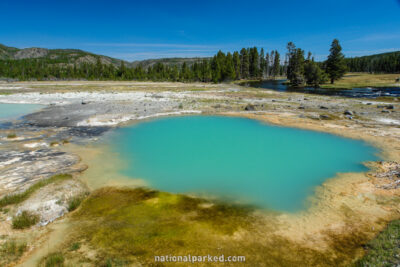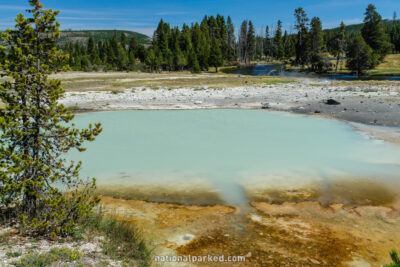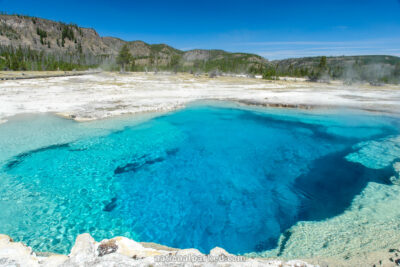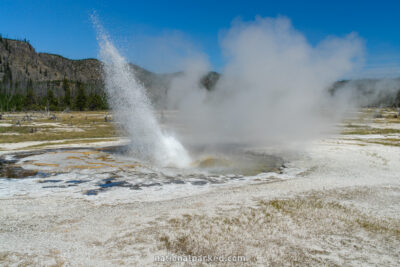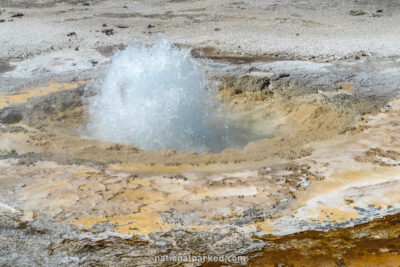Upper Geyser Basin, Biscuit Basin Area
Biscuit Basin is part of the massive Upper Geyser Basin. To reach it, drive 2.0 miles north of the Old Faithful Interhchange, or 14.1 miles south of Madison Junction on the Old Faithful to Madison section of the Grand Loop Road. It got its name from formations in the area that resembled biscuits. However, Sapphire Pool erupted shortly after a 1959 earthquake and obliterated the formations.
Firehole River
The path leaves the parking lot and immediately crosses the Firehole River on a wooden bridge. The warmth of the river water in the area leads to a lot of vegetation growth on the bottom.
Black Opal Pool
Just after crossing the bridge the boardwalk passes by Black Opal Pool on the right. Its murky waters occupy an explosion crater formed in 1934.
Wall Pool
Just past Black Opal Pool is another, Wall Pool. It was created by the same series of explosions that created Black Opal Pool, but earlier, in the 1920s.
Sapphire Pool
Another pool is on the right before the loop portion begins. It is the striking Sapphire Pool. This pool is very deep, which produces the amazing deep blue color. This pool also erupts occasionally, although not as forcefully as it used to. As stated in the introduction, this pool is responsible for destroying the biscuit formations the basin is named for.
Jewel Geyser
Go straight where the loop begins. Jewel Geyser is on the right side. This geyser erupts frequently, usually every 7 to 10 minutes.
Mustard Spring
Mustard Spring actually acts as a small geyser, erupting 5 to 10 feet at very short intervals. The yellow color the name comes from is caused by iron oxide minerals.
